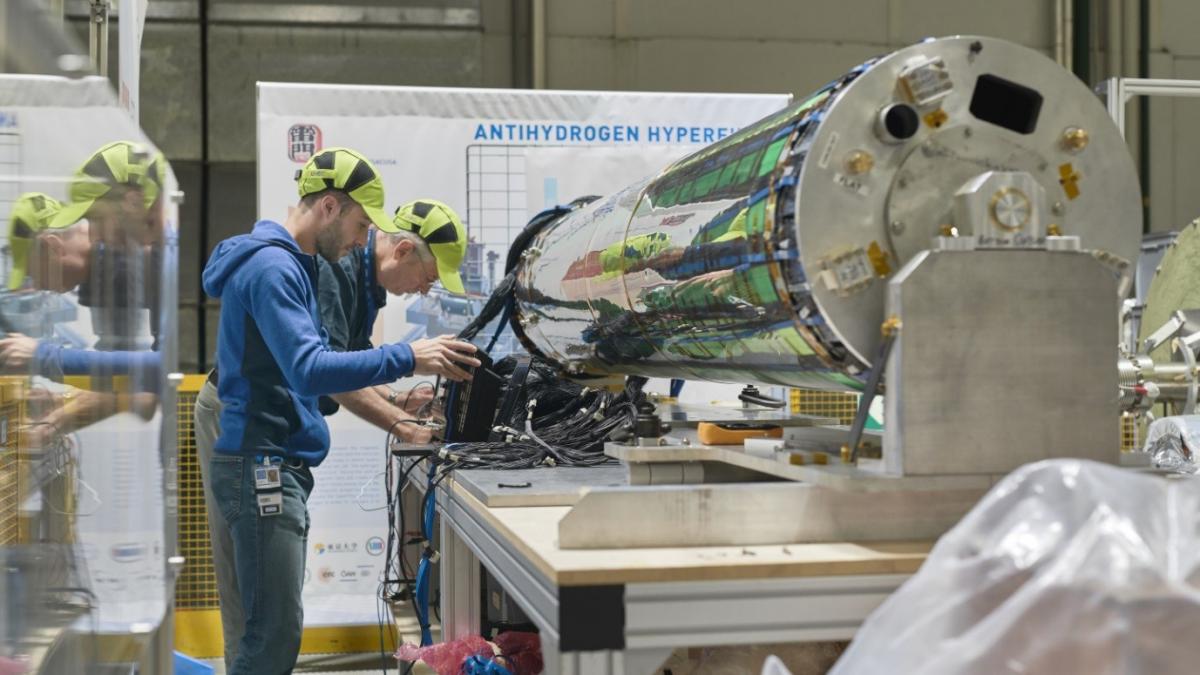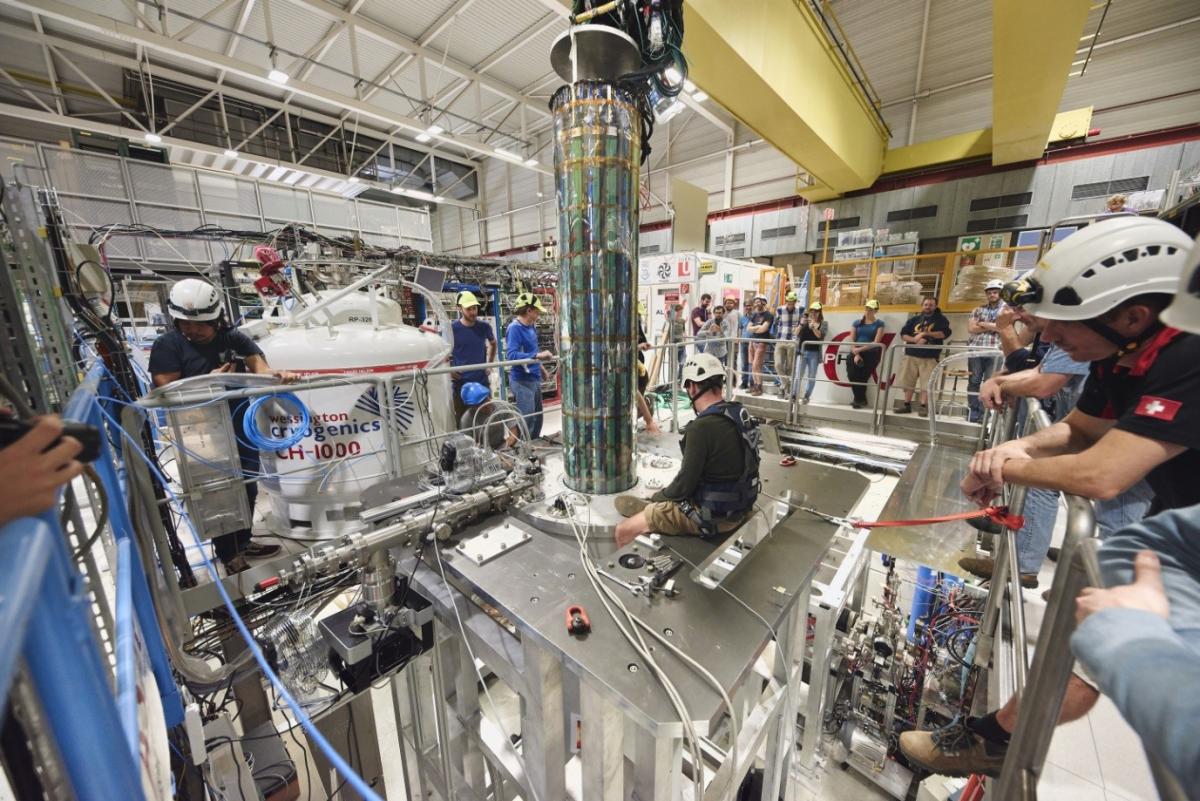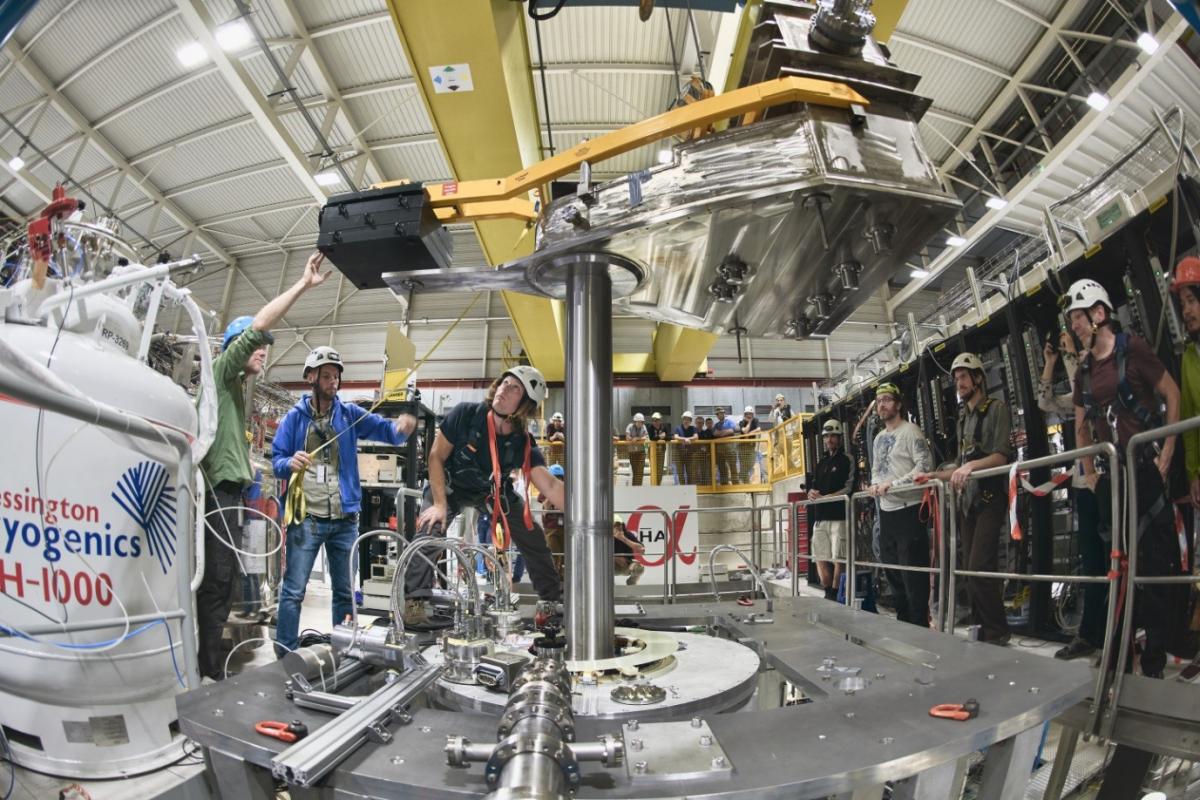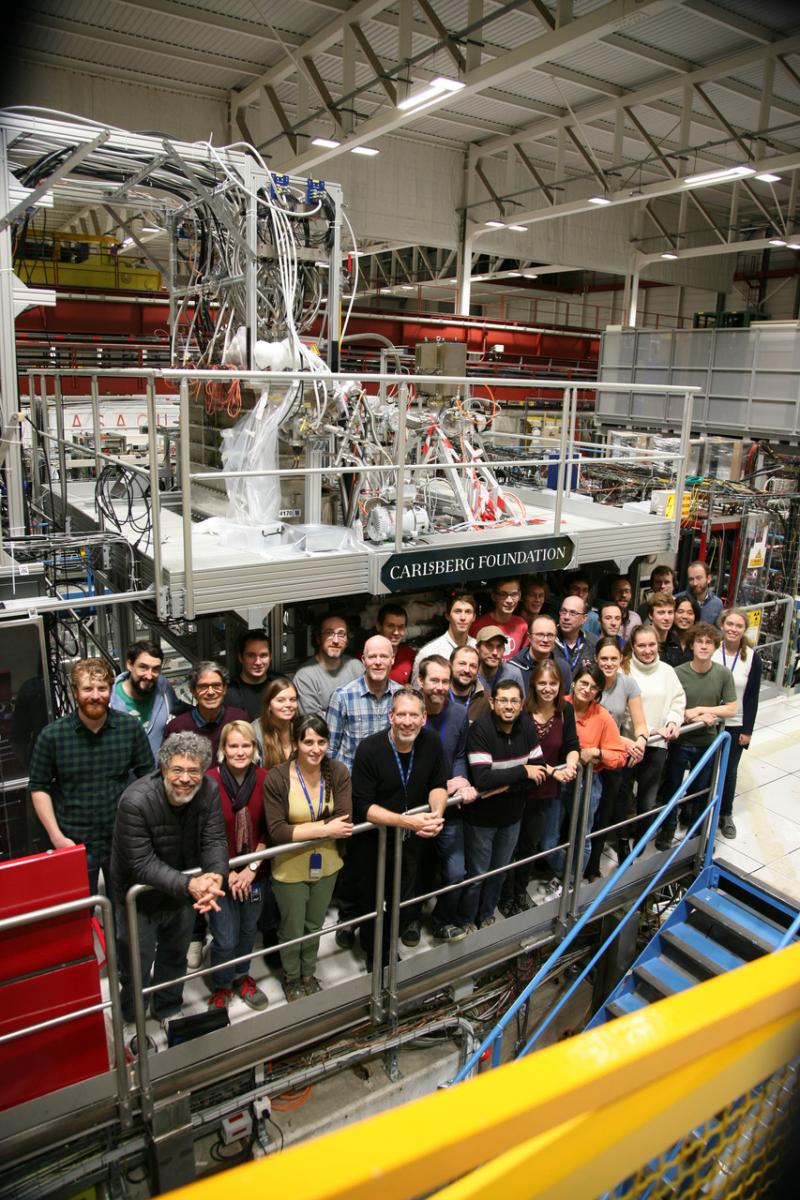ALPHA-g sees its first antiparticles: does antimatter fall up or down?
The ALPHA collaboration working on antihydrogen at the Antiproton Decelerator (AD) in building 193 has successfully expanded their setup with new devices. The previous setup consisted of a positron accumulation device, accumulating positrons from a sodium radiative source, a dedicated catching trap to receive antiprotons from the AD and the antihydrogen synthesis and trapping device called ALPHA-2.

The ALPHA-2 device has seen a string of successes in recent years, the latest being the observation of laser spectra of the 1S-2S and 1S-2P transitions in antihydrogen. The former led to the most accurate measurement on antimatter ever achieved with an accuracy of 12 significant digits in the transition frequency, and the latter paves the way to laser-cooling amongst other things.

Figure 1: The Barrel Scintillator for ALPHA-g Experiment is composed of 64 trapezoidal scintillating bars arranged in a barrel shape. Each bar is readout at each end with SiPM sensors for a total of 128 channels.
In an ambitious effort to expand the discovery potential, ALPHA has added a new device called ALPHA-g to the setup. ALPHA-g is, to put it simply, a vertical (and longer) version of ALPHA-2 that will allow measurement of Earth's gravitational acceleration on the cold neutral antihydrogen atom by slowly releasing the atoms from a magnetic trap and monitoring their escape downwards or upwards with an imaging annihilation detector.
To make this installation possible ALPHA first pushed their positron accumulator about 7 meter downstream and installed a low energy beamline that would allow to continue the transport of positrons to ALPHA-2 while also allowing the transport of positrons and antiprotons to ALPHA-g that was subsequently installed above this beamline.


Figure 3: Insertion of the detector assembly (radial TPC and barrel scintillator) into the main ALPHA-g solenoid
 Installation of ALPHA-g finished at about the same time that the AD returned from a technical stop due to problems with the electron cooler, and the apparatus was commissioned with particles during the last three weeks of beam from the AD. Both antiprotons and positrons were transported to and recaptured in ALPHA-g during this time, and brought to interact, though a small leak in the cryostat prevented temperatures low enough for antihydrogen to be observed. However, the new radial time projection chamber detector and barrel-shaped scintillator were commissioned and detected their first antiproton annihilations.
Installation of ALPHA-g finished at about the same time that the AD returned from a technical stop due to problems with the electron cooler, and the apparatus was commissioned with particles during the last three weeks of beam from the AD. Both antiprotons and positrons were transported to and recaptured in ALPHA-g during this time, and brought to interact, though a small leak in the cryostat prevented temperatures low enough for antihydrogen to be observed. However, the new radial time projection chamber detector and barrel-shaped scintillator were commissioned and detected their first antiproton annihilations.
This successful commissioning should allow ALPHA to observe antimatter atoms falling under the effect of gravity in 2021 when antiprotons return, by then delivered to the experiment by the new extra low energy antiproton ring ELENA. "Does antimatter fall up or down?" is an old speculation that deserves a straight experimental answer that ALPHA-g should achieve in its initial exploration.
